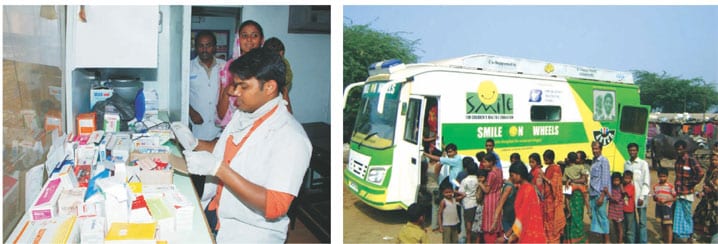GO DIGITAL FOR BRIDGING THE HEALTHCARE GAP

The field of medicine and healthcare stands alone as the domain which has welcomed applications of modern digital technology and embraced the same for all its worth.
And in return, digital technology has found its most potent and useful application in this particular field, benefitting millions of otherwise deprived patients across the globe. From helping doctors overseas access patients records to helping chronic patients manage their ailments, to educating the elderly and expectant mothers and even reminding patients about their next scheduled test and medicine dosage, digital technology has enabled all this and more.
Thanks to the innovative uses and applications of this technology, patients and doctors are today more empowered, and in the process digital medical technology has achieved two global goals. First, it has improved overall medical systemic efficiency wherever it has been applied and secondly, it has successfully bridged the healthcare gap between the haves and the have-nots.
Perhaps the most useful application of this technology, which has done wonders for taking medicine and medical expertise to areas where there wasn’t any at all, is telemedicine. As we all know telemedicine is a broad application of IT and digital technology wherein satellite, internet and mobile services are harnessed to provide timely clinical health care to patients across countries and borders, where lack of monetary resources have put a huge section of health services out of their reach, otherwise.
Such has been the success of this particular technology application that a 2012 RNCOS Industry Research Solutions report titled, ‘Global Telemedicine Market Analysis,’ projects that the global telemedicine market will grow at CAGR of around 19% between 2010 and 2015. More importantly, the report also notes that India will be one of the countries leading this growth.
This is not surprising in the least, considering the country is in fact an apt example of a complex medical paradox. The same is emphasized by a 2010 Deloitte and CII study on the medical technology industry in the country. The report states, “India’s healthcare system is paradoxical – on the one hand, it boasts of ‘best in class’ healthcare delivery attracting medical tourists from across the world, and on the other, it is characterised by a near absence of accessible, affordable quality health services for a large part of its population”.
It is for this reason, that in the last decade or so concerned doctors, the government and philanthropists have come together to harness this technology in the field of medicine and clinical care, to use it as a tool to extend healthcare coverage in the country. While telemedicine is perhaps just a decade old in India, it is growing fast, keeping pace with developments in the digital sector.
In a 2012 interview with Wharton, President, Apollo Telemedicine Networking Foundation and past president of the Telemedicine Society of India, K. Ganapathy notes, “80% of India’s population has no direct, physical access to specialist health care. Estimates suggest that the telemedicine market is at least for 800 million Indians. Even if half of these 800 million need to consult a specialist once a year, [that still amounts to] 400 million specialist consultations per year. Even if 10% of these are enabled through telemedicine we are talking about 40 million consultations per year from rural India alone…. The market potential for telemedicine is obviously enormous.”
However, for this digital innovation to reach its fruition, its applications need to be supported and developed as a business opportunity, so that upcoming companies and management leaderships don’t think twice before investing in it. The 2010 Deloitte reports notes that part of the problem is that there are simply not enough investments being made in this field. It explains, “The per capita spend on medical technology in India is approximately US$2, as compared to US$5 for China and US$231 for Germany”.
This then needs to improve, because in the short span that this technology has been in use in the country, it has become a crucial part of its healthcare ecosystem. In its absence, a huge segment of the Indian population would fall wayside, medically and clinically.
India is a huge country with a proportionately burgeoning gap between the need and availability of even the basic healthcare services. People at lower economic strata are devoid of it owing various reasons namely accessibility, affordability and availability. Smile on Wheels (SoW) was one the best known models which was designed and evolved to address these above-mentioned challenges in taking healthcare to the underprivileged population. World Health Care Congress has recognised Smile on Wheels as the ‘unique delivery model’ in taking healthcare to the poor.
However, this seems to be just the beginning a journey, rather than the final frontier. There are five additional Smile on Wheels (SoW) mobile hospitals waiting to be launched to service. Many of the existing SoWs are stretching their capacities to limits by three times.
The reason is simple to find out; there will always be more needy population than we will get ourselves ready for. In India particularly, collaboration between the government, corporate, development sectors, hospitals and communities alike are giving encouraging results. But the real solution seems to lie in technological innovation to achieve a far more efficient outcome for the most needy population of ours – to increase the reach with urgency and to avail them with specialist healthcare.




